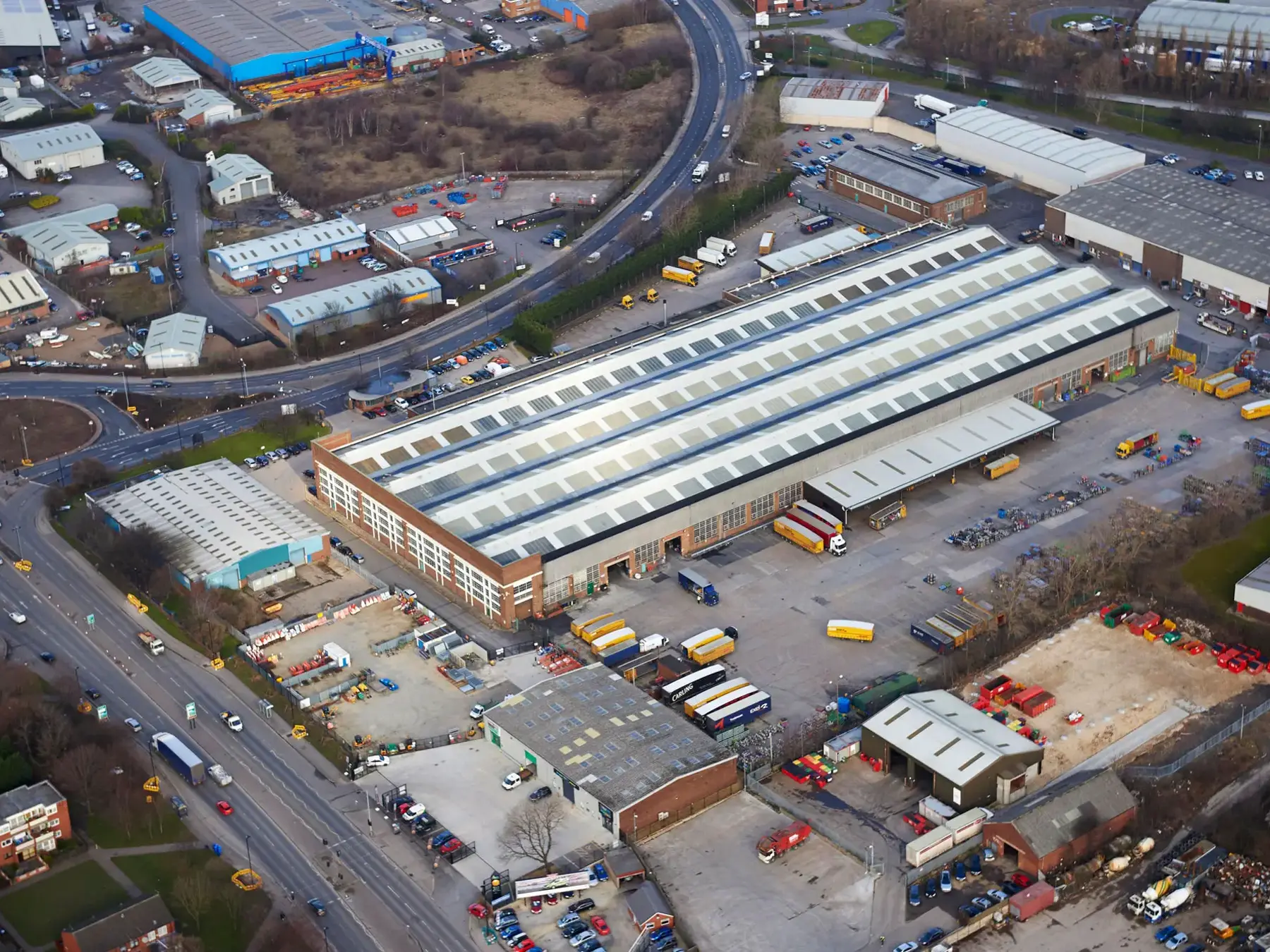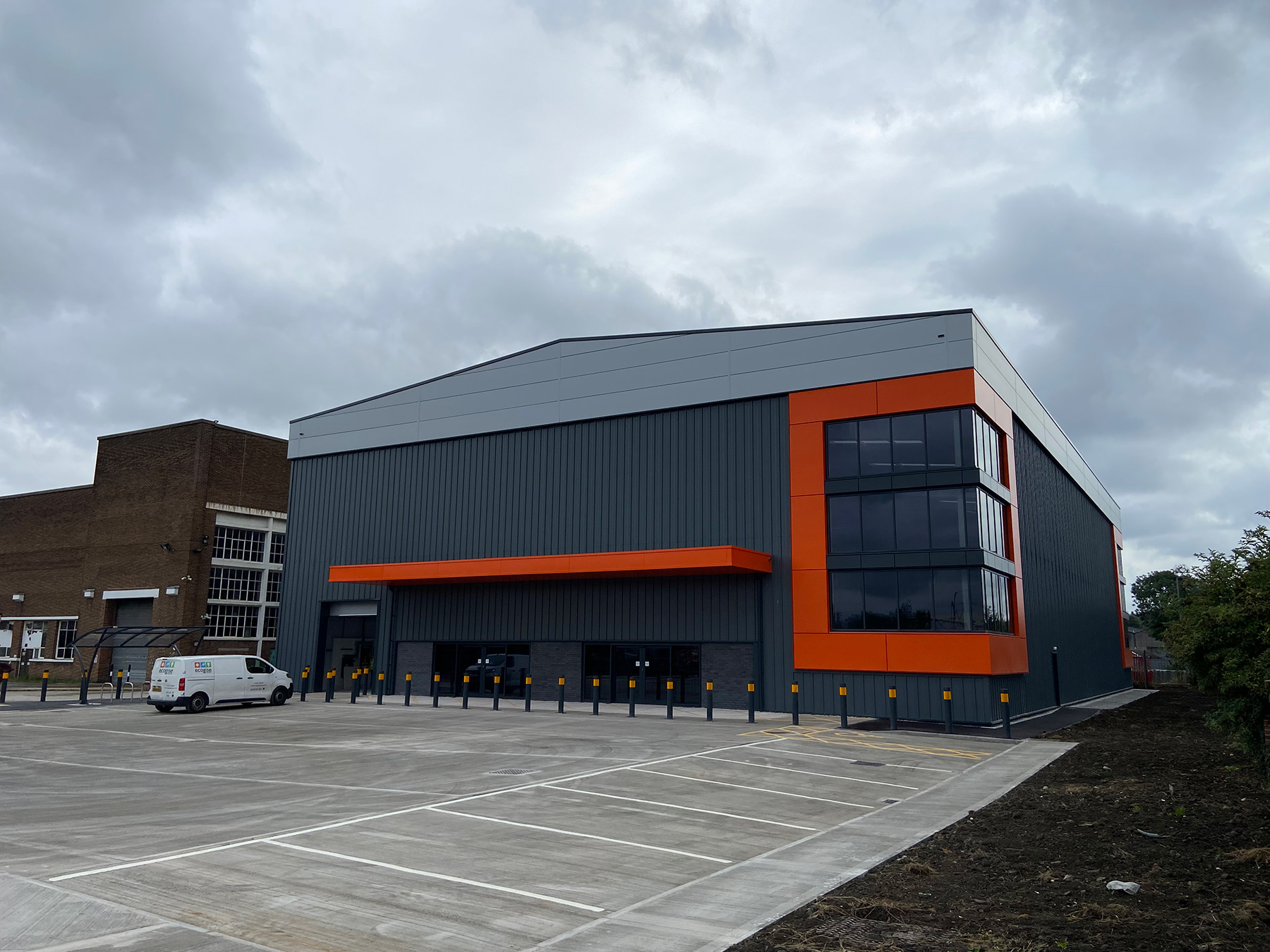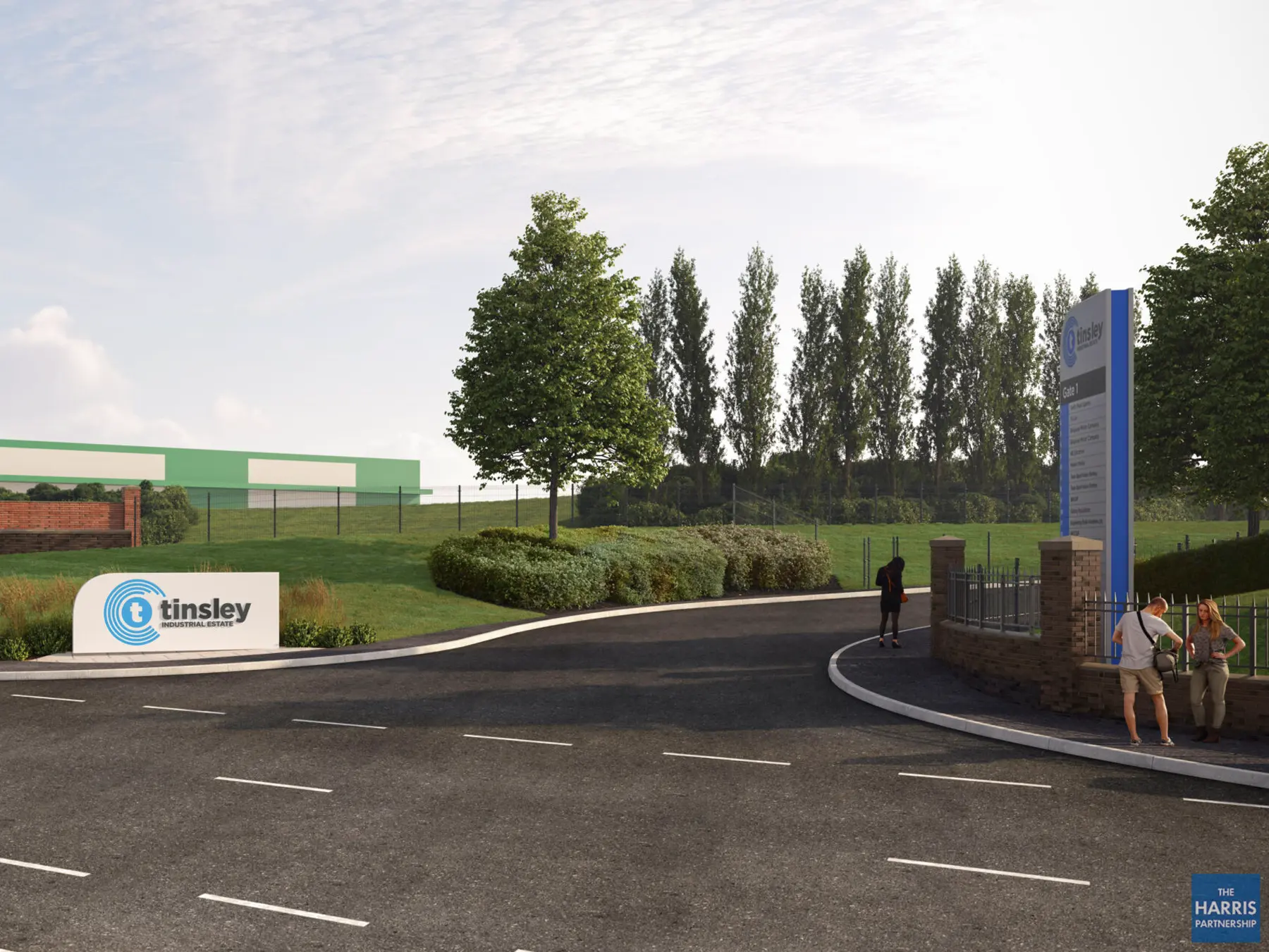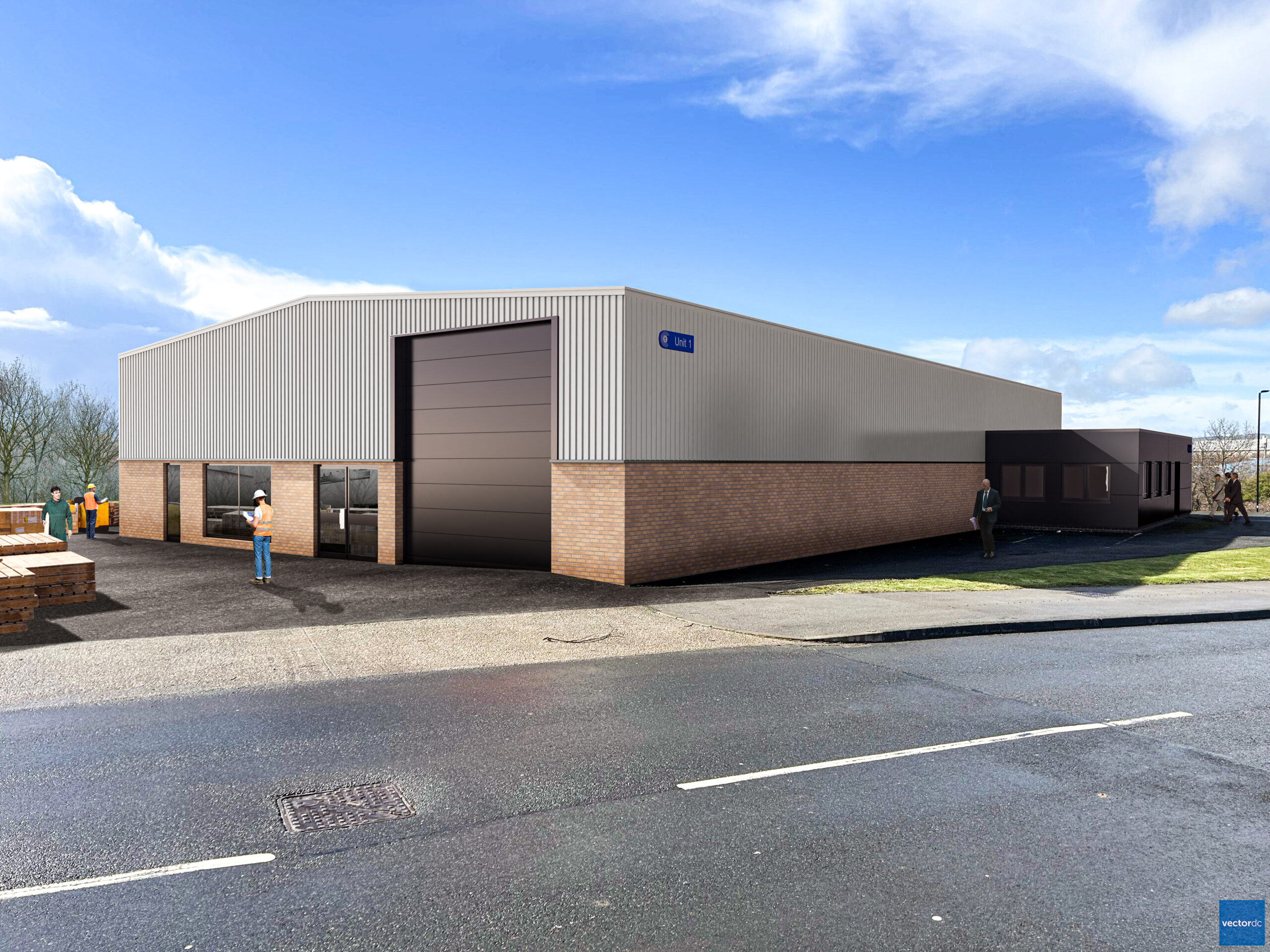Our Projects
The Tinsley Industrial Estate, Sheffield Where the sun shines every day.

Grandad used to say that ‘the sun only shines in Sheffield for 2 weeks of the year!’

This was a reference to ‘Sheffield fortnight’ when Sheffield closed down their steel mills and went on their summer holidays. The rest of the time the air was dense with smoke, such was the nature of traditional heavy metal industry. Things are much different in the lower Don Valley these days. Meadowhall shopping centre sits at the top of it and it’s now an established industrial area with lots of crinkly tin schemes. All of this feeds into the M1 so it’s a great industrial location. Pollution is nothing like what it used to be; there are even fish in the river Don!
The Tinsley Industrial Estate is not one of those shiny, new, crinkly tin schemes mentioned above. Far from it. Half of it is a 1950’s built former brewery – 190,000 sq.ft. and the rest is 1970’s styled industrial units under asbestos roofs with small yards and dated office contents – 265,000 sq.ft. This article is about the 1970’s element.
The institution which owned this estate prior to our appointment based its investment management decisions on net income, not total returns i.e. add up all the income, deduct all the costs and that’s the result. The capital value of the estate didn’t feature in their performance calculation. Whilst income is important, this basis of performance makes it harder to invest in the estate and typically, service charge costs are higher as fund managers seek to recover as much as they can. After a while, everything can start to feel a bit ‘short-term’ and the investment credentials usually reflect this. This was the case in 2015 when we were appointed; the AWULT for this estate was circa 2.4 years or in other words, if the all the tenants left at the first opportunity then the estate would, on average, empty in 2.4 years. Surely this credential could be harnessed?

The estate was populated by predominantly local Sheffield businesses and the attitude was typically a Yorkshire one…
‘we get nowt from t’service charge’
‘the access roads falling to bits’
‘nob’dy knows we’re ‘ere’
‘we’ve been ‘ere forever, we pay t’rent and we get now’t back’
Or in non-local terms, there was no real profile, no sense of arrival, the common parts were increasingly dilapidated, elements of the buildings were life end there was a increasing sense of landlord abandonment.
The void rate was over 20% and there was Japanese Knotweed growing through the slab in the long term void unit, right next to a pool of water which never seemed to go away! It was totally unlettable!





Wind forward 2 years and the AWULT (to breaks, not expiry) was 7.3 years….that’s seven point three, and the net income was c. £250,000pa more than it was 2 years prior. The void rate has steadily fallen ever since, it’s been virtually nil for the last 3 years and comfortably under 10% for the last 4. Net income is has more than doubled and the AWULT has easily held above 5 years.
How does such a profound change in fortunes come about? Here more than anywhere a period of ‘hardcore tenant engagement’ was needed. You have to put your finger on the pulse of the estate and after doing this, it was abundantly clear that many of the established business would happily commit to the estate if it would only work better for them. This involved:
Rebranding
Unit renumbering into a logical order – the previous numbering made no sense whatsoever
Common area investment to:
– Provide security upgrades
– Resurface the access road
– Provide legible tenant directory boards with the right tenant names on it
– Provide proper wayfinding
– Properly deal with water issues
– Deliver a substantial and complimentary landscaping scheme
Select investment into the buildings:
– Power upgrades
– Roof replacements
– Higher refurbishment specification
– Select demolition of poor units to create better yard and circulation spaces. The loss of floor area is a tough call for landlords but sometimes its just the right thing to do.
– EPC & MEES improvements

The initial net income leap wasn’t simply ‘doing lettings’ but tapping into the existing occupiers desire to stay on better terms if the chronic, longer term issues were put to bed. The income surge came when the estate was properly repositioned and lettings followed. The recent strength of the industrial sector has been fully captured at Tinsley. The net income is now nearly £750,000pa ahead of what it was on our appointment. The estate has been traded twice and we have been retained twice. There is no better example of how the power of a property investment can be harnessed by immersing yourself in the estate, allocating the time it needs as opposed to what you can afford to give it, investing in the right areas and positioning it for positive market movements. You also have to do the right thing persistently if you’re going to keep occupiers pulling in the same direction as the owner. This can be challenging with the revolving door of consultants. The current personnel count is:
- 4 property management firms
- 6 property managers
- 4 facilities managers
- 1 agent
- 1 building surveyor


